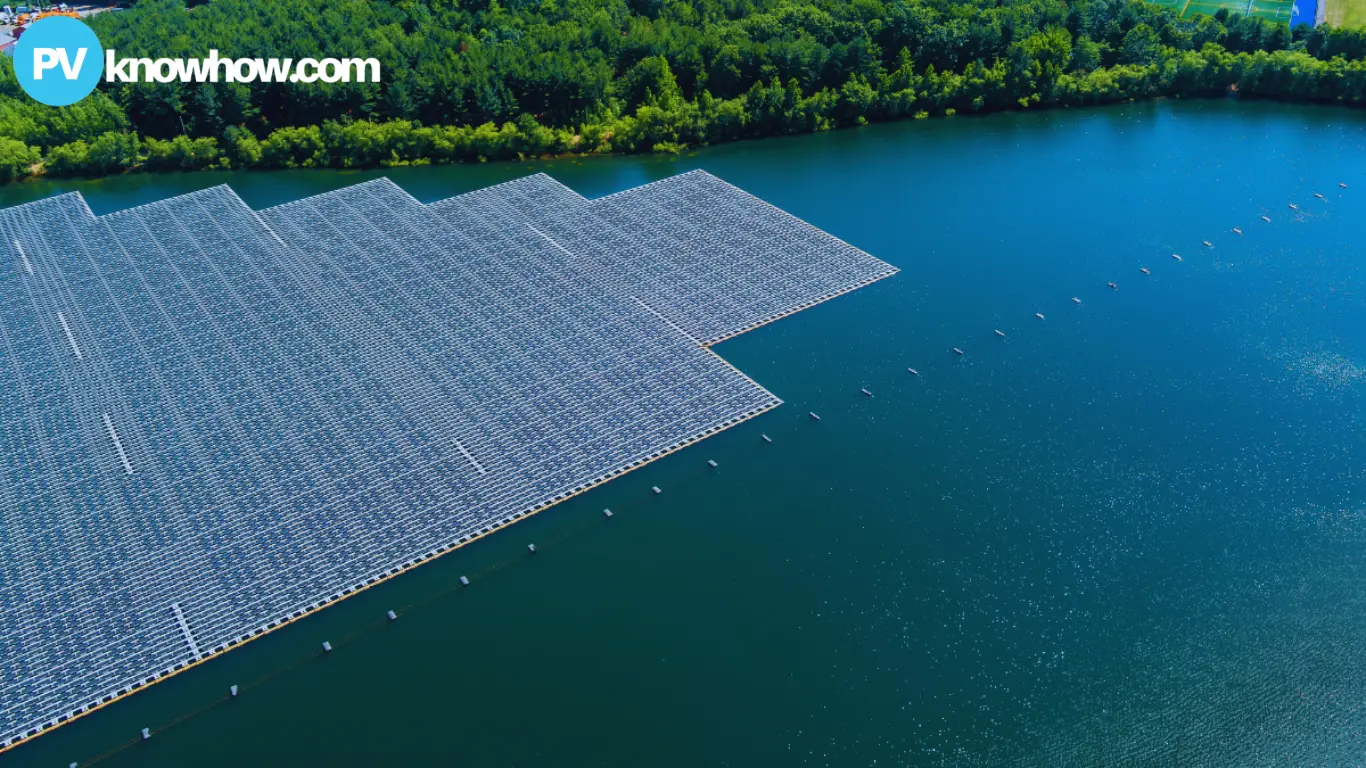Zimbabwe and Zambia are conducting feasibility studies on floating solar systems at Kariba Dam to counter declining hydropower output due to droughts. Supported by the African Development Bank, the study is expected to complete by early 2025, potentially guiding solar expansion on Lake Kariba.
Declining Hydropower Capacity Spurs Solar Exploration
Zimbabwe and Zambia are collaborating to explore the potential of floating solar systems on Lake Kariba to increase energy generation at the Kariba Dam. Through the Zambezi River Authority (ZRA), the two nations have initiated feasibility studies aimed at installing floating solar systems on the dam.

Zimbabwe and Zambia partner to explore floating solar on Lake Kariba, boosting energy generation at Kariba Dam.(Image: Collected)
The project has gained support from the African Development Bank (AfDB), which is funding a study to assess the viability of the project. Energy and Power Development Minister Edgar Moyo recently confirmed the ongoing study, projecting its completion by the first quarter of 2025.
The push toward floating solar systems comes as Kariba Dam faces challenges in maintaining its hydroelectric power output. With an installed capacity of 1,050 megawatts, the dam’s output has dropped significantly, producing only around 184 megawatts in recent months.
Minister Moyo addressed the issue of reduced hydropower generation in a recent statement to Zimbabwe’s National Assembly. “We have commissioned a study financed by the AfDB to look at the viability of floating solar systems on Lake Kariba,” he said. Moyo explained that the bi-national ZRA — which manages water resources for Zimbabwe and Zambia — is leading the study.
Kariba Dam: A Vital Energy Source Facing New Challenges
Kariba Dam — built in the late 1950s and one of Africa's largest dams — has been a key power source for Zimbabwe and Zambia. With a hydroelectric capacity of 1,050 megawatts, the dam is essential to both countries' energy infrastructure. However, recurring droughts have lowered water levels, thereby causing operators to reduce power output to conserve water.
Zimbabwe’s energy supply has been under pressure due to the low output from both Kariba Dam and the Hwange Thermal Power Station. The country’s depressed generation capacity has led to rolling blackouts, affecting industries and households alike.
Floating solar systems present a promising solution, allowing Zimbabwe to harness its abundant sunlight while alleviating pressure on water resources. The new solar infrastructure at Kariba could also reduce dependence on fossil fuels, supporting Zimbabwe’s transition toward a greener energy mix.
How Floating Solar Systems Could Transform Energy Production
Floating solar systems — mounted on platforms that float on water — offer a way to expand solar power capacity without using land. Unlike traditional solar power plants, floating solar arrays do not require large land areas, making them environmentally friendly and efficient.
These floating platforms are often installed on lakes, reservoirs, and dams, where they take advantage of nearby water to cool the solar cells. This cooling effect increases the efficiency of solar panels, especially in hot climates.
The floating solar modules also provide benefits for water bodies by reducing evaporation and helping control algae growth. At Kariba Dam, where water conservation is essential, floating solar could serve the dual purpose of generating renewable energy and reducing water loss from the reservoir. With high solar potential in the region, Lake Kariba is an ideal location for this type of installation.
AfDB’s Support and Timeline for Floating Solar Study
The feasibility study for floating solar systems at Kariba Dam is part of a larger program funded by the AfDB. The study is set to conclude by early 2025, providing insights into the technical and financial viability of installing solar arrays on the lake.
According to Minister Moyo, this project has become a top priority, with other floating solar programs scheduled to start next year. These initiatives reflect the efforts of both Zimbabwe and Zambia to address energy shortages and enhance energy security through renewable solutions.
If successful, the floating solar systems on Lake Kariba could serve as a model for other African nations seeking to expand renewable energy. The project would demonstrate how floating solar technology can address challenges in water-scarce regions, offering a sustainable alternative for energy production.
Zimbabwe and Zambia’s exploration of floating solar systems at Kariba Dam reflects a commitment to sustainable development and energy resilience. With continued support from the AfDB, the two countries are making strides toward a future where renewable energy plays a central role in meeting their power needs.
